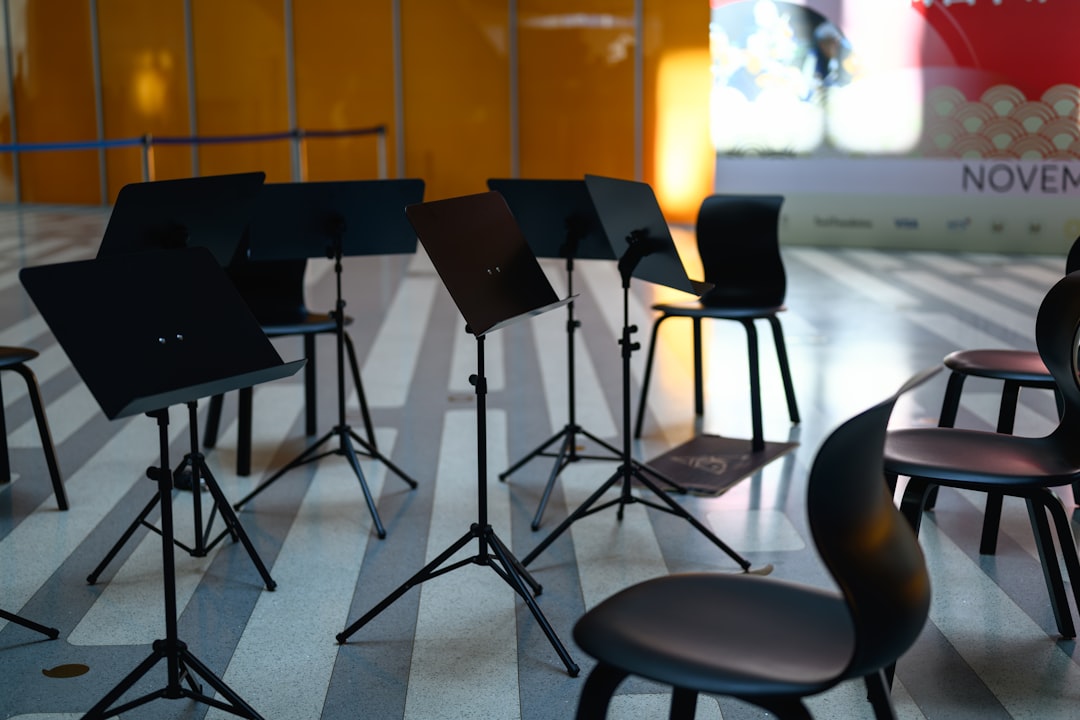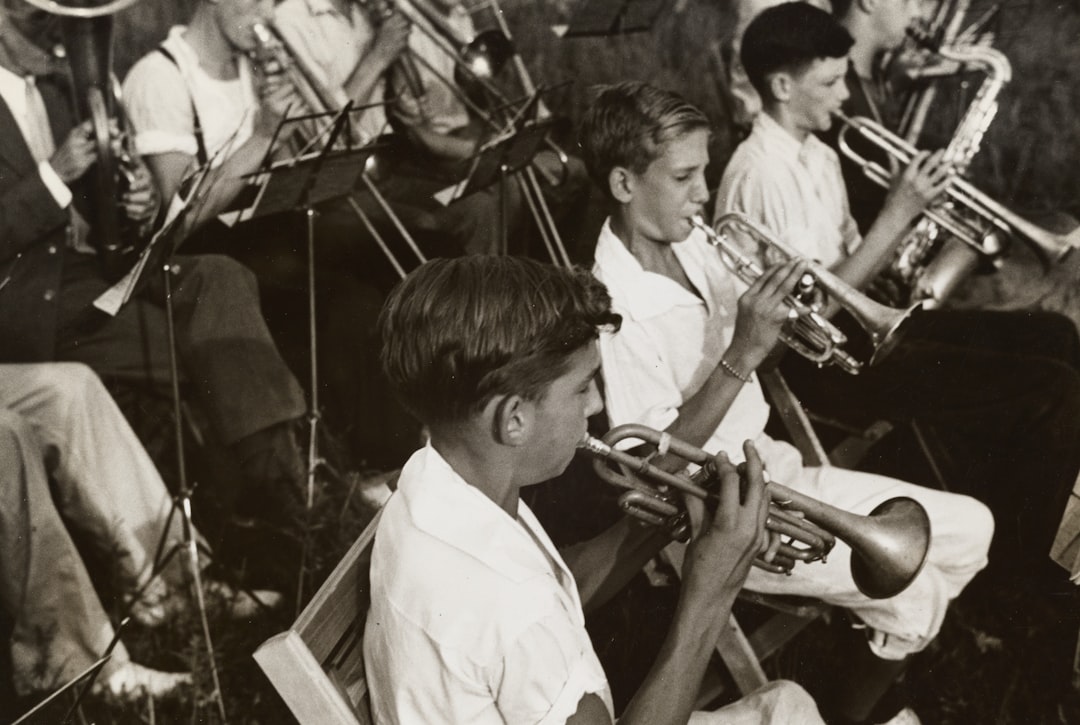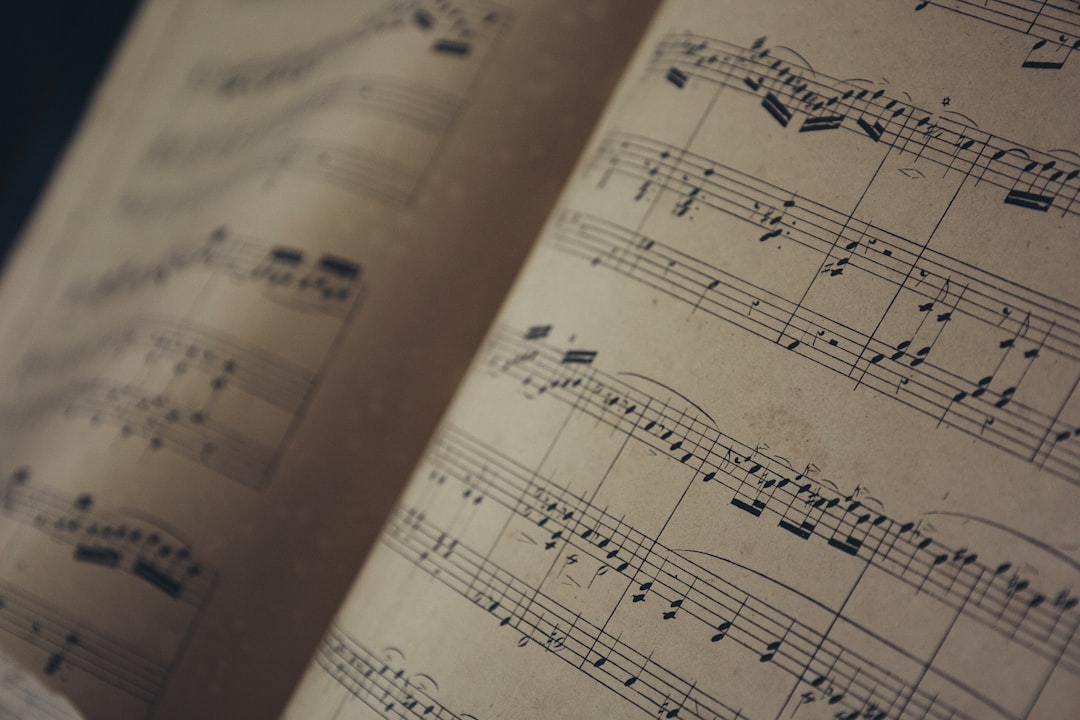

Engage prospects with a scan and streamline customer engagement with FREE QR code marketing tools by Sona – no strings attached!
Create a Free QR CodeFree consultation

No commitment

Engage prospects with a scan and streamline customer engagement with FREE QR code marketing tools by Sona – no strings attached!
Create a Free QR CodeFree consultation

No commitment

QR codes bridge the gap between physical touchpoints and digital outcomes, letting music schools capture feedback at the moment interest peaks. Instead of distributing paper forms after classes or collecting comment cards at recitals, a single scan places families and students directly on a short, mobile-friendly survey. This simplicity increases participation, improves the quality of responses, and shortens the time between feedback and action.
A persistent challenge in music education is that valuable insights often get lost in analog processes. Paper surveys pile up, email links are buried, and subjective impressions are hard to align with specific events or instructors. By simplifying participation with QR codes and pairing them with easy-to-use Google Forms QR codes, schools reduce friction and make it convenient for every stakeholder to share timely, specific, and honest input.
Here is how to do it effectively:
Replacing paper forms at end-of-semester concerts with a simple “Scan to share your thoughts” QR code means every scan is instantly captured, tied to the right recital or course, and routed to your dashboard. Staff can immediately see themes, follow up with families who request a call, and prioritize improvements for the next session.
When schools close the gap between engagement and insight, team workflows become lighter and outcomes become measurable. A streamlined feedback loop also signals to students and parents that their voice matters, building trust and encouraging continued participation throughout the academic year.

Many music schools lack visibility into who is engaging and why. A full recital hall does not translate into actionable insights unless you can segment attendees, connect feedback to specific performances, and follow up with interested families. QR codes help bridge this missing link by transforming printed materials and physical spaces into digital channels that capture intent and context.
The benefits extend beyond speed. QR codes eliminate the need for app downloads, lower the barrier to participation, and keep communications flexible. If a form or link changes after you print programs, a dynamic QR code lets you update the destination without reprinting anything. When used consistently, QR codes turn passive materials into data-rich touchpoints, giving schools a unified view of engagement before, during, and after events.
From appointment cards and audition flyers to class syllabi, event programs, and open house signage, QR codes turn everyday items into calls to action. Students and parents can scan to:
If a sign-up form or information page needs updating after printing, dynamic QR codes let music schools make changes on the fly, minimizing waste and keeping communications current. Trackable QR codes also reveal who engaged, where scans occur, and which materials drive action. This visibility helps schools align programming and messaging with the needs and interests of their community.

Music schools run an intricate mix of classes, recitals, ensemble programs, and community outreach. Each scenario benefits from a different QR destination. Using the right format ensures the scanner lands on the page that supports the desired action, whether that is sharing feedback, registering for an event, or accessing materials.
While simple web links cover many needs, more specialized formats can streamline contact exchange, capture structured input, or reduce friction at events. The key is to choose formats that match intent and context, then standardize the experience across your campus so families know what to expect when they scan.
Dynamic QR codes are recommended for surveys, registrations, and any destination that might change. They provide ongoing editability and scan analytics. Static codes are fine for permanent resources like a faculty directory or a practice tips PDF, provided the URL will not change. A hybrid approach ensures you gain flexibility and insight where you need it most.

The biggest wins often come from the moments that historically generated little or no data. For example, end-of-semester surveys miss details that surface during weekly lessons, and community flyers rarely capture who is interested. By placing QR codes in locations that students and families already frequent, you can convert passive engagement into measurable signals.
Think about the full lifecycle of a music student, from initial discovery through recitals, ensemble experiences, and advancement. Each stage presents opportunities to listen more closely, support better, and tailor programming. Strategic QR placement ensures fewer missed opportunities and more timely responses to the needs of your community.
By turning high-traffic spaces and printed assets into portals for real-time action, your school gains clarity on what resonates and where to invest. Over time, the data highlights which classes need additional sections, which ensembles draw the most interest, and which recruiting channels deserve more budget.

Missed or delayed follow-up is costly in education. Parents intend to register but forget, students have suggestions but no easy way to share them, and staff lose hours chasing paper trails. QR-enabled processes reduce friction and capture every interaction in a format that is easy to act on and measure.
When you design QR journeys around specific outcomes, you get measurable lift in participation and better data quality. Below are high-impact use cases that map directly to common music school touchpoints and goals.
Each use case pairs well with automated data integration into school CRMs or SIS platforms. This ensures that once a family scans, the right team member is notified and the next best action can happen without delay.
Each scan captures intent, context, and timing. By using distinct QR codes across your programs and materials, you can build segmented lists that reflect real behavior rather than assumptions. This enables relevant follow-ups by email, SMS, or paid media and improves the quality of your outreach.
Segmentation should mirror the student journey: discovery, evaluation, enrollment, and engagement. It should also reflect program categories like piano, voice, strings, percussion, and ensemble participation. When your tags map to real-world interests and moments, intent-driven retargeting becomes meaningful and respectful rather than generic.
For education specifically, segment prospective students versus current enrollees, beginners versus advanced performers, and youth programs versus adult learners. This ensures that your follow-ups honor each person’s goals and stage, which in turn boosts conversion and satisfaction.
QR codes act as connective tissue across print, events, email, and social channels. They enable offline attribution, accelerate on-the-spot engagement, and unify reporting across placements that were historically hard to measure. This is especially helpful for music schools that rely on community presence, word of mouth, and seasonal programming.
When integrated thoughtfully, QR codes create a consistent experience from the first flyer a family sees to the follow-up email they receive after scanning. The result is a cohesive funnel where every surface and message leads to a logical next step.
With a centralized platform like Sona QR, you can manage all codes, monitor performance, and sync scan activity with your CRM and ad platforms. This alignment allows you to optimize spend on the channels that truly drive engagement and enrollment.
A common obstacle is not knowing which placements or messages drive the best outcomes. Without a repeatable process, teams risk inconsistent results and wasted effort. A structured checklist keeps campaigns focused on a clear outcome, ensures the right QR type is used, and sets you up to test and refine.
Use the following steps to run QR initiatives that yield reliable insight, high completion rates, and measurable enrollment lift. Customize each step to fit the unique rhythms of your academic calendar and event cadence.
Start by defining the single action you want a scanner to take. Examples include collecting post-recital feedback, RSVPs for a masterclass, QR code ticketing, scholarship interest, or a request for a course consultation. A focused purpose prevents dilution and clarifies your call to action.
Tie the use case to a business outcome. If your goal is to improve teaching quality, design a three-question survey for immediate scan-and-submit at classroom exits. If enrollment is your target, focus codes on audition sign-ups and information sessions, then route scans into a prompt follow-up sequence.
Use dynamic QR codes for any campaign where you need tracking, flexibility, or retargeting. Dynamic codes let you update destinations, add UTM parameters, and capture scan data like time, device, and location. They are ideal for ongoing surveys, interest forms, and seasonal events.
Static QR codes are suitable for unchanging assets such as a faculty directory PDF or a general practice resource page. If you are unsure, choose dynamic to preserve flexibility, particularly when printing large batches of programs or flyers.
Customize the code with your logo, brand colors, and a clear frame that separates it from surrounding artwork. Place a benefit-driven CTA near the code such as “Scan for quick feedback” or “Scan to reserve your seat.” Keep surrounding text legible and uncluttered to ensure scannability.
Test the code across common devices and camera apps, at various sizes and distances. Check lighting conditions in the spaces where the code will live. A simple preflight scan test on an actual program or sign can prevent on-site frustration and lost responses.
Match your placements to audience behavior. For example, put feedback codes on recital programs and exit signage, course interest codes on brochures and mailers, and resource codes on practice room doors and syllabi. Use unique codes for each location to compare performance and identify top placements.
Consider print size and contrast, especially for auditoriums and lobbies. For high-traffic spaces, ensure codes are large enough to scan from a seated distance. For classroom doors and handouts, a smaller footprint is fine, provided the code is not crowded by other elements.
Monitor scans in a dashboard like Sona QR to see which channels, times, and locations drive the most engagement. Track completion rates for the destination form and identify where drop-offs occur. If scans are high but completions are low, shorten the form or refine the CTA.
Run A/B tests on CTA language, code placement, and landing page layout. Iterate quickly between events and class cycles. Feed results into your CRM to enrich contact records, trigger relevant follow-ups, and inform programming decisions.
One of the biggest frustrations for music schools is the inability to link offline engagement to actual outcomes like enrollments, renewed lessons, or higher satisfaction scores. Generic site analytics only show visits and clicks. QR analytics add context about when, where, and why someone engaged so you can align strategies with what truly works.
A robust analytics setup reveals not only scan volume but also conversion behavior, event-level engagement, and instructor-level impact. When linked to your CRM, it becomes possible to attribute enrollment changes to specific marketing assets and moments in time, building confidence in your investments.
With Sona QR and Sona.com, you can go beyond basic scan counts. Sona QR captures real-world engagement and connects it to campaigns, while Sona.com uses identity resolution and multi-touch attribution to show how scans contribute to pipeline and closed revenue. The combined view links QR interactions with website visits, email clicks, and CRM activity for a complete picture of progression from first interest to enrollment.
Sustained success relies on thoughtful design, clear calls to action, and consistent education of your community. Even the best placements underperform if families do not understand what they get from a scan or if the destination page feels generic. The most effective QR programs make scanning intuitive and immediately rewarding.
Focus on making each scan feel like a helpful shortcut. Offer concise forms, instant resources, or a human follow-up within 24 hours. Over time, as families see their feedback acted upon, participation will grow and the insights you collect will become richer and more actionable.
Platforms like Sona QR centralize code creation, tracking, and integrations so your team can focus on actions rather than administration. The more seamlessly data flows into your existing tools, the easier it is to deliver timely, relevant experiences.
Music schools that close the loop between offline touchpoints and digital actions see rapid gains in participation and enrollment. By treating every performance, practice space, and printed piece as a potential data source, they uncover patterns that would otherwise remain invisible.
The most successful teams use a mix of quick wins and thoughtful experiments. They improve one recital’s feedback form, then expand to masterclasses and ensembles. They add instrument-specific resource hubs and re-engagement sequences for lapsed students. Over time, this incremental approach produces significant lift.
Use these examples as a springboard. Do not try everything at once. Choose one or two touchpoints where feedback will immediately improve instruction or operations, then scale what works.
Rolling out QR code campaigns can falter when placement is poor, calls to action are vague, or destination pages feel generic. A code is only as effective as the value it delivers, the clarity of its promise, and the ease with which people can complete the action.
Treat QR deployment like any other performance initiative. Set a hypothesis, deploy, measure, and iterate. Share findings with faculty so everyone understands why a code is placed in a specific spot and what you are testing next.
QR codes are more than a shortcut; they are a strategic tool that integrates every in-person interaction with digital insight and measurable outcomes. For music schools, this means a seamless way to gather rich feedback, surface patterns in student needs, and capture intent from prospective families at the moment it appears.
With thoughtful planning and the right platform support, you can modernize your approach without adding administrative burden. Sona QR helps you create and track codes, while Sona.com connects scan activity to downstream outcomes like enrollments and revenue. Together, they give you a clear path to boost engagement, eliminate blind spots, and convert every program, performance, and printed piece into a catalyst for growth and student success.
Start creating QR codes for free
QR codes have transformed music schools from traditional feedback methods into dynamic, real-time engagement tools. Whether it’s gathering student and parent feedback, enhancing communication, or streamlining administrative processes, QR codes replace cumbersome paper surveys with instant, mobile-friendly interactions that capture valuable insights to improve your programs and services.
Imagine instantly knowing which teaching methods resonate most, which events drive the highest participation, or how to tailor lessons to student needs—all from a simple scan. With Sona QR, you can create dynamic, trackable QR codes in seconds, update surveys without reprinting materials, and connect every scan to meaningful outcomes that elevate your music school’s success. No missed feedback, no guesswork—just smarter, data-driven decisions.
Start for free with Sona QR today and turn every scan into actionable feedback, stronger relationships, and a more harmonious learning experience.
Music schools can deploy tailored QR codes on recital programs, practice rooms, and event signage to link families and students to short, mobile-friendly surveys that capture timely and specific feedback.
QR codes increase participation, improve response quality, shorten feedback time, eliminate paper forms, and provide real-time analytics that help schools act on insights quickly.
QR codes should be placed at recital programs, studio doors, classrooms, waiting areas, promotional flyers, and admission packet inserts to capture feedback and interest at key moments.
Dynamic QR codes are recommended for surveys, registrations, and any destination that might change, while static codes are suitable for permanent resources like faculty directories or practice tips.
Schools use QR codes for audition and enrollment interest forms, event RSVPs, scholarship inquiries, and resource access, enabling automated follow-ups and personalized communication.
By using platforms with real-time analytics, schools can track scan volume, location, time, device type, and link engagement to events, instructors, and enrollment outcomes through CRM integration.
Benefit-driven CTAs like 'Scan for quick feedback,' 'Scan to reserve your seat,' or 'Scan to vote on next semester’s repertoire' improve scan motivation and completion rates.
Unique QR codes tagged by use case and location capture intent and context, enabling segmented lists for relevant email, SMS, and paid media follow-ups aligned with student journeys and interests.
Avoid poor placement, vague CTAs, generic landing pages, and neglecting to test scan and completion rates; ensure codes are placed where people pause and link directly to intended actions.
QR codes turn passive materials into actionable data, help prioritize improvements, identify popular programs, and enable timely responses to student and parent needs based on real feedback.
Use Sona QR's trackable codes to improve customer acquisition and engagement today.
Create Your FREE Trackable QR Code in SecondsJoin results-focused teams combining Sona Platform automation with advanced Google Ads strategies to scale lead generation

Connect your existing CRM

Free Account Enrichment

No setup fees
No commitment required

Free consultation

Get a custom Google Ads roadmap for your business






Launch campaigns that generate qualified leads in 30 days or less.
